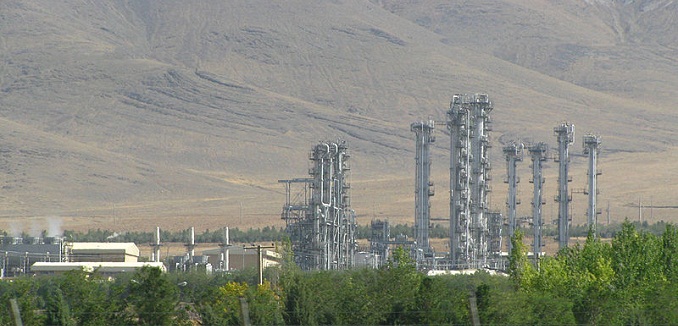A heavy-water plutonium reactor that Iran has committed to bringing online would become “invulnerable to military attack” once Iranian scientists activated it, according to analysis conveyed today by TIME. The explanation is straightforward:
Because it is not yet up and running, the Arak heavy-water reactor has remained in the background of the nuclear controversy. But it looms larger every day. The reason: once Arak goes online, the option of destroying Iran’s nuclear program with air strikes becomes moot. The reactor is essentially invulnerable to military attack, because bombing one risks a catastrophic release of radioactivity. In the words of Israel’s last chief of military intelligence, Amos Yadlin, who piloted one of the F-16A’s that cratered Iraq’s Osirak heavy-water reactor in 1981 before it was due to become operational: “Whoever considers attacking an active reactor is willing to invite another Chernobyl, and no one wants to do that.”
Work toward activating the reactor, which is part of the Arak facility that also includes a heavy water production plant, has been described as part of Iran’s “Plan B” for developing a nuclear weapon. Material produced by the reactor could be used to make a plutonium-based bomb, alongside the uranium-based bomb that the international community fears Iran is seeking to construct with material produced via enrichment facilities.
Former IAEA Deputy Director Dr. Olli Heinonen, speaking Monday on a conference call organized by The Israel Project, noted that Iran’s construction at Arak appears to be an alternative, at least for a rainy day, to have fissionable material, which could be, for example used for nuclear weapons.”
TIME also outlines how Iran, using paperwork that Iranian officials have already filed, could surreptitiously activate the reactor:
Iran told the U.N. agency that, as it readies the Arak plant for operation, it intends to do a practice run: instead of inserting real fuel rods filled with uranium into the reactor’s core, where nuclear fission occurs, they would insert inert “dummy” fuel rods. And instead of pumping heavy water into the reactor to moderate the nuclear reaction and absorb the thermal energy being released, Iran said it plans to use “light water,” just ordinary H2O.
The plan mystifies experts, who take particular issue with testing the system using light water. The facility would be contaminated by ordinary H2O, which if mixed with heavy water would render the latter unusable, because in order to work heavy water must be 99.75% pure… rather than save time, using ordinary water would delay the project for the weeks required to clean the system thoroughly enough to assure no trace of H2O remained; it wouldn’t take much to dilute the heavy water below 99.75%.
Iran’s stated intentions are unlikely enough that an Israeli nuclear specialist suggests that they might be a ruse. Ephraim Asculai, a scientist retired from the Israel Atomic Energy Commission, warns that Iran may have no intention of carrying out a dry run at all. It may be a cover story, he posits, for a plan to rush the installation of live fuel rods and heavy water instead — essentially getting the Arak facility “hot” before the outside world expects, at which point it becomes invulnerable to military attack. There might then be no way to stop Iran’s nuclear program short of invasion.
U.S. lawmakers have demanded that Iran halt work on the reactor as a condition for lifting sanctions, but Iran has thus far shown no willingness to do so. Iranian President Hassan Rouhani in fact recently boasted that a diplomatic charm offensive conducted by his government had left Tehran “consolidating its nuclear rights step by step, and removing hurdles from the path of the nation’s progress.”
[Photo: nanking2012 / Wiki Commons]




